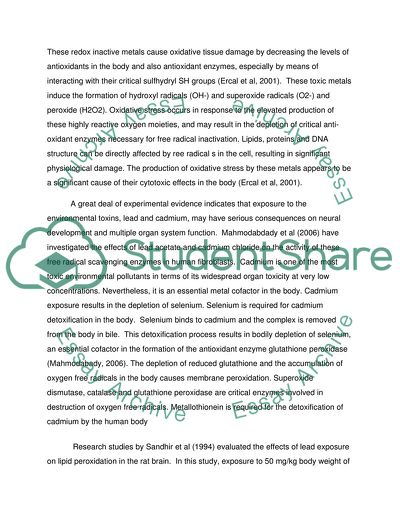Cite this document
(Heavy Metal Lead (Pb) and Cadmium (Cd) Cytotoxicity Assessment in Newb Research Paper, n.d.)
Heavy Metal Lead (Pb) and Cadmium (Cd) Cytotoxicity Assessment in Newb Research Paper. Retrieved from https://studentshare.org/biology/1745066-affect-of-toxic-metals-on-animals-and-human-health
Heavy Metal Lead (Pb) and Cadmium (Cd) Cytotoxicity Assessment in Newb Research Paper. Retrieved from https://studentshare.org/biology/1745066-affect-of-toxic-metals-on-animals-and-human-health
(Heavy Metal Lead (Pb) and Cadmium (Cd) Cytotoxicity Assessment in Newb Research Paper)
Heavy Metal Lead (Pb) and Cadmium (Cd) Cytotoxicity Assessment in Newb Research Paper. https://studentshare.org/biology/1745066-affect-of-toxic-metals-on-animals-and-human-health.
Heavy Metal Lead (Pb) and Cadmium (Cd) Cytotoxicity Assessment in Newb Research Paper. https://studentshare.org/biology/1745066-affect-of-toxic-metals-on-animals-and-human-health.
“Heavy Metal Lead (Pb) and Cadmium (Cd) Cytotoxicity Assessment in Newb Research Paper”, n.d. https://studentshare.org/biology/1745066-affect-of-toxic-metals-on-animals-and-human-health.


